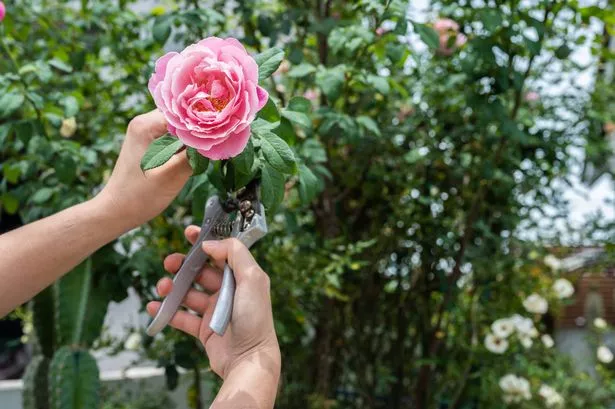Roses are a garden staple, but many gardeners struggle to keep their rose plants healthy and flowering strongly – but there’s one simple aspect of care to follow. Keep your garden happy and healthy with this tip(Image: Elena Popova via Getty Images)
Keep your garden happy and healthy with this tip(Image: Elena Popova via Getty Images)
Rose bushes are marvellous for bringing sophistication, charm, and visual appeal to gardens, particularly when they’re bursting with buds and blossoms. However, for numerous gardeners, maintaining their rose plants in good health and ensuring vigorous flowering can prove difficult.
Climate conditions, pests, diseases, and fungal problems can all impact a rose bush’s performance.
Yet more commonly than not, the reason a rose bush fails to bloom and produce repeat flowers stems from one straightforward and entirely manageable care element – deadheading.
The positive news is that this task is easy to accomplish and requires minimal time to complete.
The gardening specialists at This Is My Garden highlighted that if there is “one big mistake many rose growers make” with their roses, it’s failing to remove old, deteriorating blooms promptly.
Regrettably, by leaving spent blooms in position, it can “slow down” and even “stop the bush from blooming more”, reports the Express.
 Deadheading roses helps them to thrive(Image: Boy_Anupong via Getty Images)
Deadheading roses helps them to thrive(Image: Boy_Anupong via Getty Images)
Deadheading, which shouldn’t be confused with pruning, involves removing dying or deceased blooms from a plant.
This practice is crucial for enhanced flowering in many annuals and perennials.
In contrast, pruning constitutes regular plant care where leaves and branches are cut away.
When rose flowers are permitted to remain on the bush past their peak, it forces the plant to waste precious energy. Energy that ought to be directed towards producing fresh blooms.
As long as spent blooms stay connected to the plant, they persist in consuming and depleting nutrients. The bush will keep channelling extra resources to the declining bloom in an attempt to restore it.
To “correctly” remove a wilting bloom from a rose bush, snip the bloom off just below its attachment point to the main stem or branch. This halts any energy the plant is expending in an attempt to revive the old bloom, allowing it to concentrate on producing new blooms instead.
Light pruning of rose bushes can also be carried out during the summer months. This helps maintain the shape of the plant and by removing surplus stems and foliage, it allows more energy for blooming.

